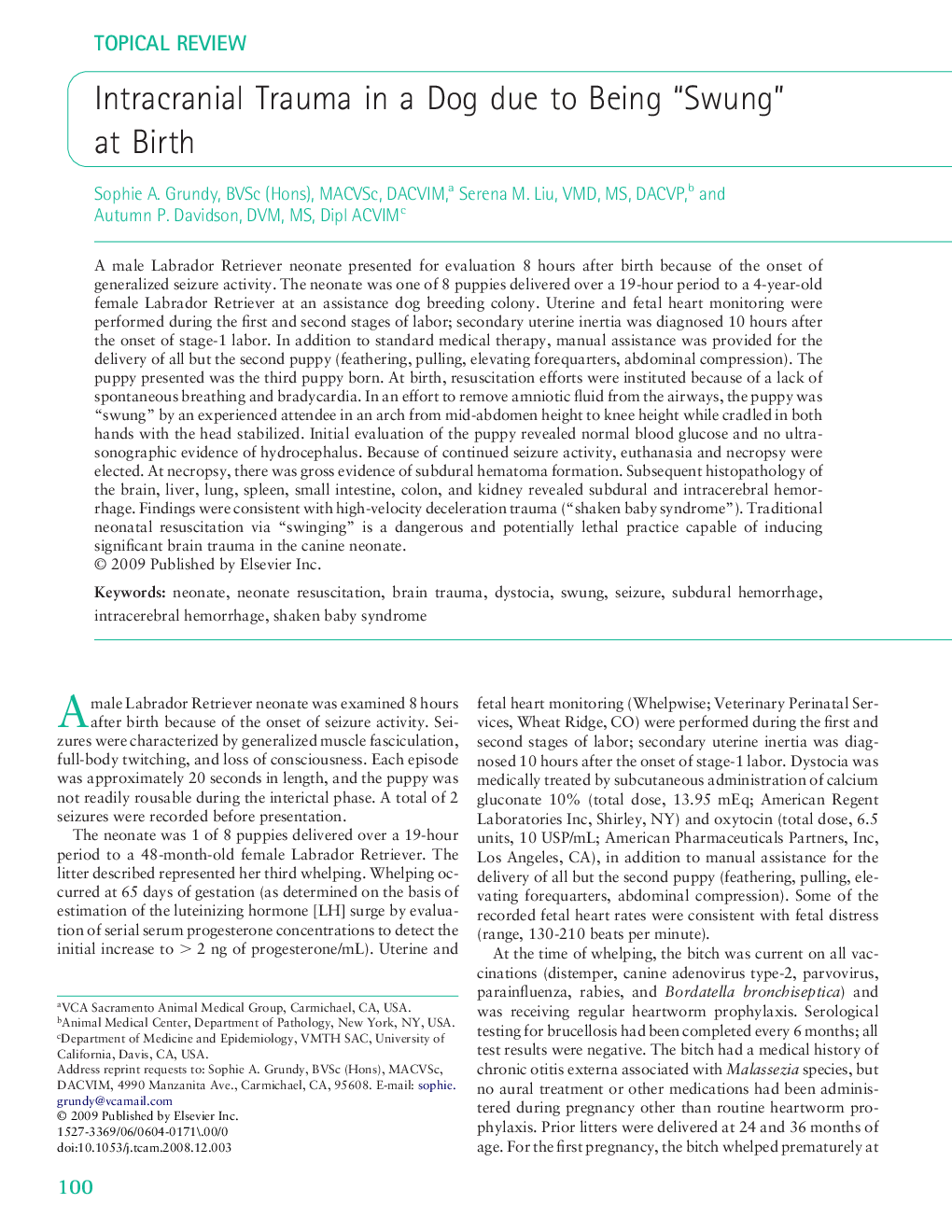| Article ID | Journal | Published Year | Pages | File Type |
|---|---|---|---|---|
| 2401330 | Topics in Companion Animal Medicine | 2009 | 4 Pages |
A male Labrador Retriever neonate presented for evaluation 8 hours after birth because of the onset of generalized seizure activity. The neonate was one of 8 puppies delivered over a 19-hour period to a 4-year-old female Labrador Retriever at an assistance dog breeding colony. Uterine and fetal heart monitoring were performed during the first and second stages of labor; secondary uterine inertia was diagnosed 10 hours after the onset of stage-1 labor. In addition to standard medical therapy, manual assistance was provided for the delivery of all but the second puppy (feathering, pulling, elevating forequarters, abdominal compression). The puppy presented was the third puppy born. At birth, resuscitation efforts were instituted because of a lack of spontaneous breathing and bradycardia. In an effort to remove amniotic fluid from the airways, the puppy was “swung” by an experienced attendee in an arch from mid-abdomen height to knee height while cradled in both hands with the head stabilized. Initial evaluation of the puppy revealed normal blood glucose and no ultrasonographic evidence of hydrocephalus. Because of continued seizure activity, euthanasia and necropsy were elected. At necropsy, there was gross evidence of subdural hematoma formation. Subsequent histopathology of the brain, liver, lung, spleen, small intestine, colon, and kidney revealed subdural and intracerebral hemorrhage. Findings were consistent with high-velocity deceleration trauma (“shaken baby syndrome”). Traditional neonatal resuscitation via “swinging” is a dangerous and potentially lethal practice capable of inducing significant brain trauma in the canine neonate.
